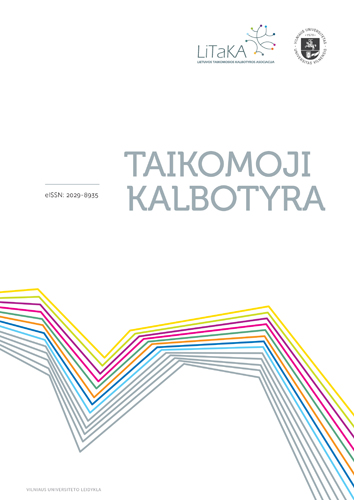Kaip tirti antrosios kalbos įsisavinimą: skerspjūvio metodas
How to study second language acquisition: a cross-sectional method
Author(s): Jogilė Teresa RamonaitėSubject(s): Language acquisition, Psycholinguistics, Sociolinguistics
Published by: Vilniaus Universiteto Leidykla
Keywords: second language acquisition; Lithuanian L2; spontaneous speech; natural second language acquisition; language research method; psycholinguistics; sociolinguistics;
Summary/Abstract: This paper describes a cross-sectional method, which is employed when conducting research on acquisition of Lithuanian as a second language. This is one of the most optimal methods to study the process of language acquisition in adults, since it does not demand a long-term commitment on the part of the studied subjects. On the basis of the method, a specific research protocol has been designed in the framework of various second language acquisition research projects conducted in Europe. One of its advantages is that language data can be collected in a fairly small group (10-30 people) of learners of different acquisition levels. The data collected in this way is later analysed and compared between learners in order to determine the acquisitional sequence and other aspects of interest. The main corpus for this study is constituted by language data collected during a semi-structured (socio)linguistic interview, which is a free talk with a participant, who is encouraged to talk. The talk includes some specific questions. During the interview, not only the language data but also some important information about other relevant sociolinguistic factors is collected, such as age, period of stay in the country, language attitudes and motivation. To be able to better compare the participants and to study specific linguistic aspects that might fail to appear in spontaneous speech, all the participants are given the same additional tasks. The tasks described in this paper are of different types: film retelling, storytelling according to a sequence of pictures, describing two similar pictures and indicating differences between them, giving a recipe and repeating sentences. Different competences are required in these tasks but most attention is given to language production. The paper also offers some practical advice and observations based on the study. The specific study where the method was applied for Lithuanian aims at researching the development of acquisition of Lithuanian with the focus on the development of the verb system. The data collected in this manner could be used to study other aspects of language acquisition as well.
Journal: Taikomoji kalbotyra
- Issue Year: 2015
- Issue No: 7
- Page Range: 1-21
- Page Count: 21
- Language: Lithuanian

